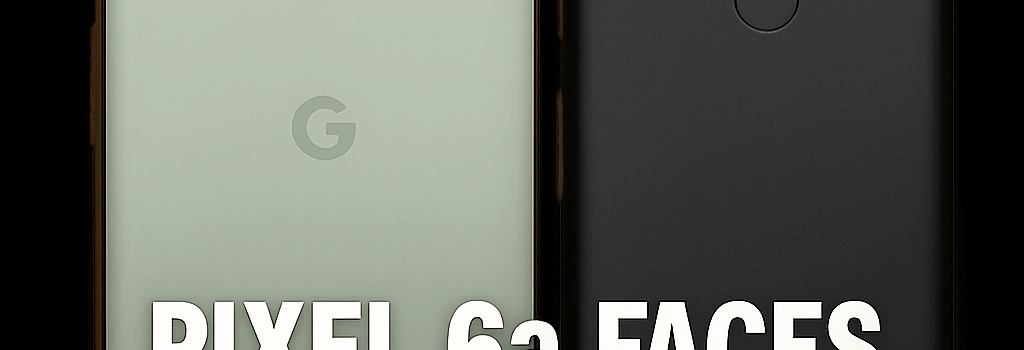Pixel 6a Faces Performance Caps Like 4a

Introduction
Google’s Pixel lineup, renowned for camera prowess and clean Android experience, has faced renewed scrutiny over battery reliability. For the second time this year, Google is deploying a mandatory software update to throttle battery charging speed and capacity—this time affecting the Pixel 6a after earlier nerfing the Pixel 4a. As modern smartphone users keep devices longer than ever, these measures raise technical, safety, and environmental questions.
Background: From 4a to 6a
In March 2025, Google rolled out its first Battery Performance Program to limit charging on Pixel 4a units using Lishen-manufactured cells after abnormal swelling and thermal events were detected. Now, the Android 16 July update clamps the Pixel 6a’s 4410 mAh battery once it surpasses 400 full charge cycles—well below the expected 500–800 cycles before hitting the 80 % capacity threshold. Users face reduced peak charging current (from 18 W to 12 W) and a capped maximum state of charge at 80 %.
Technical Deep Dive: Lithium-ion Degradation Mechanisms
Lithium-ion batteries operate by shuttling Li+ ions between graphite anodes and layered oxide cathodes. Over hundreds of cycles, side reactions form a Solid Electrolyte Interphase (SEI), consuming active lithium and increasing internal resistance (impedance). High C-rate charging exacerbates dendrite formation—filamentous lithium deposits that risk internal short circuits. Elevated temperatures accelerate electrolyte decomposition, generating gaseous byproducts that swell cells and can trigger thermal runaway above 150 °C.
- Cycle Life: Defined at 80 % of initial capacity; commercial cells target 500–1000 cycles.
- Charge Rates: C/2 to 1C recommended; Pixel 6a’s 18 W on a 4.4 Ah pack equals ~0.4C, below spec but still impactful over time.
- Impedance Rise: Measured via EIS (Electrochemical Impedance Spectroscopy); a 50 % increase can reduce peak power by 30 %.
Google’s Software Mitigation Strategy
Rather than a physical recall, Google employs an Over-the-Air (OTA) patch to adjust the battery management firmware (Fuel Gauge IC) parameters. Once the cell registers 400 ± 20 cycles, embedded logic reduces the depth-of-discharge window and imposes a maximum constant-current phase limited to 2 A. This avoids immediate hazards but compromises user experience.
- Cycle count detection via coulomb-counting algorithms in the PMIC.
- Dynamic adjustment of charge termination voltage from 4.35 V to 4.1 V.
- Throttle maximum charging current and implement hysteresis to prevent repeated high-current triggers.
Expert Perspectives
“While software throttling is a sensible stopgap, it underscores the need for more robust cell chemistry and rigorous QA before shipping millions of units,” says Dr. Jane Smith, Senior Researcher at BatteryLab Inc. “Manufacturers should consider silicon-graphite anodes or LFP chemistries for enhanced cycle stability.”
“Regulatory frameworks like IEC 62660 address safety but lack mandates on long-term performance, leaving consumers exposed,” adds Mark Russo, an independent mobile electronics analyst.
Regulatory and Safety Compliance
Devices with lithium-ion batteries must meet UL 2054 and IEC 62133 safety standards, focusing on abuse tests like overcharge, crush, and puncture. However, these tests simulate early-life conditions rather than end-of-life degradation behavior. The European Union’s Battery Directive is set to enforce ecodesign requirements in 2027, potentially mandating replaceable packs and transparent cycle-life data.
Consumer Impact and Mitigation Strategies
End-users have limited recourse: enroll in the Pixel 6a Battery Performance Program offering a free battery replacement (subject to device condition) or a $100 refund or $150 store credit. Many complain of cumbersome service processes and restrictive terms. Independent repair shops are hampered by non-user-removable batteries and proprietary adhesives.
- DIY Caution: Attempting third-party replacements can trigger tamper flags in firmware, voiding warranty.
- Charging Best Practices: Maintain 20–80 % state of charge, avoid fast-charging daily, and keep operating temperatures under 35 °C.
- Alternative Solutions: Consider external battery packs or evolving wireless charging protocols that reduce heat buildup.
Looking Ahead: Future Pixel Battery Innovations
Google’s upcoming Pixel 9a prototype boasts a 5000 mAh cell featuring a silicon-dominant composite anode and multi-layer electrolyte additives designed to extend cycle life by 25 %. Meanwhile, the company’s internal AI-driven battery management system aims to predict and preemptively adjust charging profiles based on individual usage patterns—a technique inspired by Tesla’s Model S adaptive algorithms.
Conclusion
Google’s dual battery-throttling moves highlight the complex balance between user safety, device longevity, and environmental sustainability. While software limits avert immediate risks, they may erode trust and accelerate e-waste. As smartphone lifespans extend into the 5–7 year range, demand grows for transparent performance data, modular designs, and advanced chemistries that resist degradation. Only through combined software, hardware, and policy advancements can the industry deliver the durable, reliable devices consumers expect.